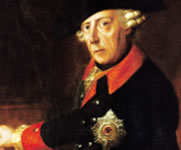Different Styles & Periods
- In the beginning was the castle
- A declaration of love to antiquity
- From Renaissance to Romanticism
- Baroque centre of culture and enlightenment
- Baroque magnificence
- Baroque gardens in the north
- Palatine baroque and Francophile elegance
- Late-baroque treasure troves
- Baroque to Biedermeier in Berlin and Brandenburg
- The Golden Age of Classicism
- Jewels of historicism
- Neo-Gothic romanticism
From Renaissance to Romanticism
Ruined castles and palaces are popular photographic subjects as their aura of transience makes them seem idyllic. Ancient walls bear witness to former splendour, long-forgotten wars of religion and succession and wonderful gardens that are a feast for the eyes. Even for modern-day romantics, their emotion, longing, beauty and mystery have lost none of their appeal.
Heidelberg Castle
Show on map »
Weikersheim Palace
Show on map »
Johannisburg Palace, Aschaffenburg
The palace building made of red sandstone sits in splendour on the banks of the river Main overlooking the Lower Franconian town of Aschaffenburg. With its four towers housing the staircases, it still dominates the townscape today. The rambling palace garden extends from Johannisburg Palace to the Pompejanum reconstructed Roman villa and St. Germain terrace.
Show on map »
Show on map »
Golden Hall, Augsburg
At 14 metres high, the Golden Hall in Augsburg's town hall is one of the highlights of Renaissance interior design in Germany. The state room owes its name to a wealth of gold decoration. Originally built as a venue for the Imperial Diets, upon completion it was mainly used as the town's assembly room.
Show on map »
Show on map »
Travel Planner
Select an option...
Location
- Heidelberg Castle
- Weikersheim Palace
- Johannisburg Palace, Aschaffenburg
- Golden Hall, Augsburg






